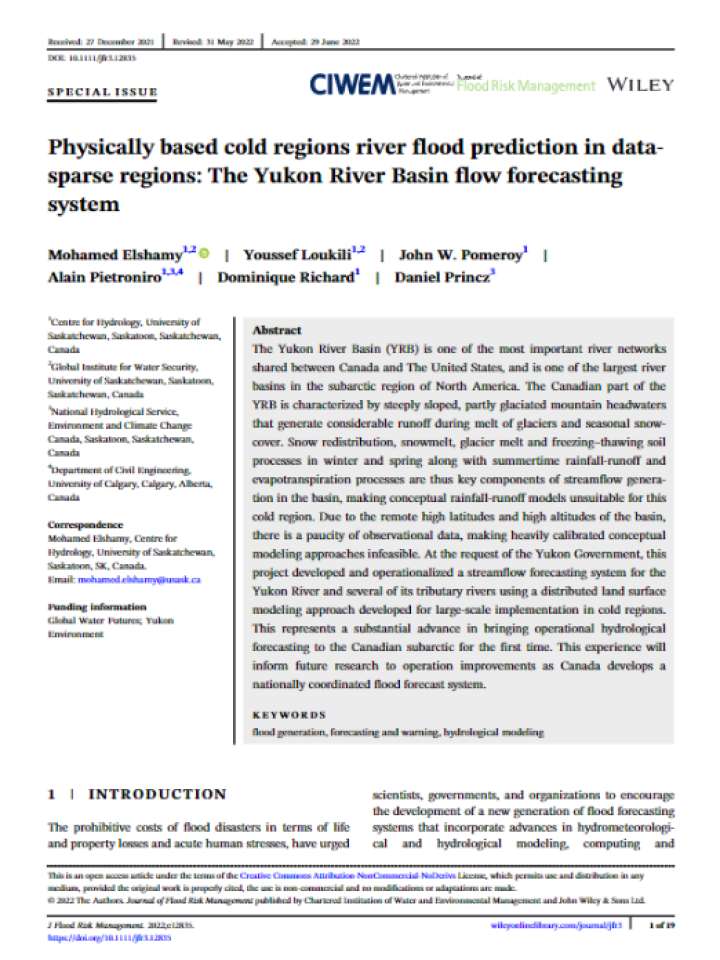Physically based cold regions river flood prediction in data-sparse regions: The Yukon River Basin flow forecasting system
The Yukon River Basin (YRB) is one of the most important river networks shared between Canada and The United States, and is one of the largest river basins in the subarctic region of North America. The Canadian part of the YRB is characterized by steeply sloped, partly glaciated mountain headwaters that generate considerable runoff during melt of glaciers and seasonal snow-cover. Snow redistribution, snowmelt, glacier melt and freezing–thawing soil processes in winter and spring along with summertime rainfall-runoff and evapotranspiration processes are thus key components of streamflow generation in the basin, making conceptual rainfall-runoff models unsuitable for this cold region. Due to the remote high latitudes and high altitudes of the basin, there is a paucity of observational data, making heavily calibrated conceptual modeling approaches infeasible.
At the request of the Yukon Government, this project developed and operationalized a streamflow forecasting system for the Yukon River and several of its tributary rivers using a distributed land surface modeling approach developed for large-scale implementation in cold regions. This represents a substantial advance in bringing operational hydrological forecasting to the Canadian subarctic for the first time. This experience will inform future research to operation improvements as Canada develops a nationally coordinated flood forecast system.
Explore further

